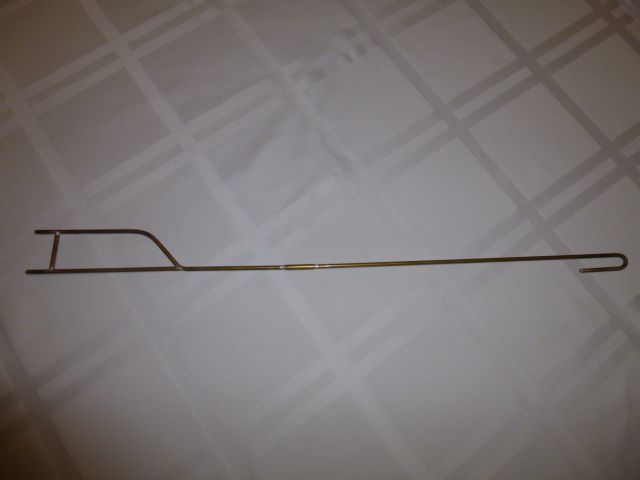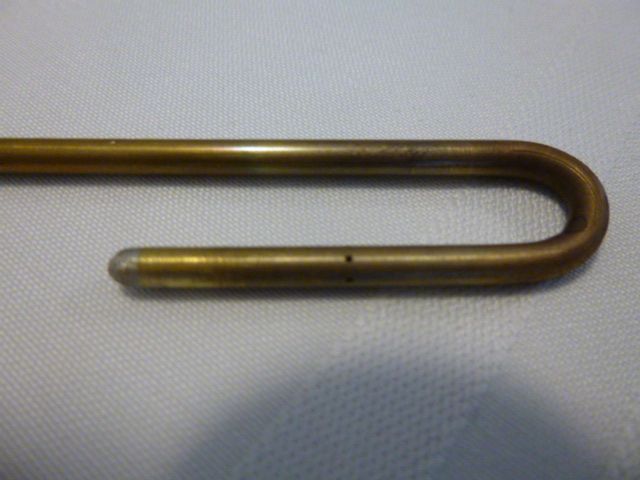Page 1 of 2
Pitot Probe
Posted: Wed Jan 29, 2014 6:39 pm
by gowest
Hello All,
Another new guy,that's been lurking for a good while but is now stepping out, trying to gain a much better understanding of airflow. I built a static/dynamic "J" bend pitot tube and did a little probing and now have more questions than answers. I am seeing pressures from negative to positive as I move around in the port. I have read that the static pressures, of each tube, cancel each other out so that would seem to indicate that any air moving toward the valve should be positive. Is this right ? I also probed with a straight piece of tubing and find variation but nothing showing positive pressure. I feel a bit like the kid with the blindfold being spun around to pin the tail on the donkey !

I think I need someone to point me toward the donkey.
Marty
Re: Pitot Probe
Posted: Wed Jan 29, 2014 9:24 pm
by Brucepts
Any pictures of your probe so we can get an idea of how you made it?
One tube should be static and the other should be impact pressure
Re: Pitot Probe
Posted: Wed Jan 29, 2014 9:47 pm
by gowest
Bruce,
I will see if I can get a photo posted up. Its been a long time since I've tried to do that so it may take a day or two.
It does have one tube impact and the other static but I am sure there is more to a successful design that. I couldn't seem to come up with anything solid on dimensions so I went with the "looks about right" method. Made of brass tubing of 1/16th" O.D. for inner (impact) , 1/8th" O.D. for outer (static) with six .026 holes approximately 5 diameters from the tip.
Marty
Re: Pitot Probe
Posted: Thu Jan 30, 2014 8:21 pm
by gowest
Here is the probe in question. I seem to only be able to put one picture in the post.
The outer or static tube is on top and the inner tube was inserted through a drilled hole in the outer tube, at the bend, and an 1/8" piece over it to facilitate the use of same size tubing to the manometer (u-tube). The overall length is 17 1/2" and 13" from "J" bend to the divergence point.

Marty
Re: Pitot Probe
Posted: Thu Jan 30, 2014 8:56 pm
by gowest
Little better look at the tip area.

Marty
Re: Pitot Probe
Posted: Thu Jan 30, 2014 8:59 pm
by Brucepts
It appears you have it all correct with two separate circuits for the airflow. So you are seeing static and impact and your manometer is reading the differential pressure between the two.
Your numbers are not going to be steady I can assure you on that
Re: Pitot Probe
Posted: Thu Jan 30, 2014 9:31 pm
by gowest
I wasn't expecting steady numbers but I thought the range would all be on the negative side. I did the probing at 10" water and the range was from about 8" negative to about the same positive. The positive pressures were more towards the roof areas of the port. This is what started me thinking that maybe the impact pressure should be positive if the static has basically been removed/offset. This is also a very low angle port. Do any of you guys see pressures ranging a good ways above and below the "0" mark ?
I guess the question is if the probe is reading correctly is this type of probe usefull in determining where to start grinding or filling to even out the velocity ? Just seems like a pretty large variance.
Can you tell I'm a rookie at airflow testing

?
Thanks,
Marty
Re: Pitot Probe
Posted: Fri Jan 31, 2014 3:02 am
by ivanhoew
nice probe marty.

Re: Pitot Probe
Posted: Fri Jan 31, 2014 8:11 am
by 1960FL
Marty, Have you tested it in a piece of PVC Pipe?
Your design has all the elements for testing air speed in a linear environment, but i think your J leg is to long and your static pickup to far back thus in certain positions in the port the static holes are actually picking up impact pressure. You may be able to prove this by using a piece of pipe and testing then changing the angle of the probe exposing the static ports to impact air.
Rick
Re: Pitot Probe
Posted: Fri Jan 31, 2014 12:45 pm
by jfholm
I have a document some place that state how to build a pitot. It states to have the static hole within 300% of the tip. Yours seem to be much further away. I feel Rick is onto the issue. btw I have a piece of PVC pipe I test in. Make sure you check the id with inside mics as the PVC is not close to their claim. If you want to have an accurate calibration you need to check this.
That is a great looking bend and tip!
 I think I need someone to point me toward the donkey.
I think I need someone to point me toward the donkey.
